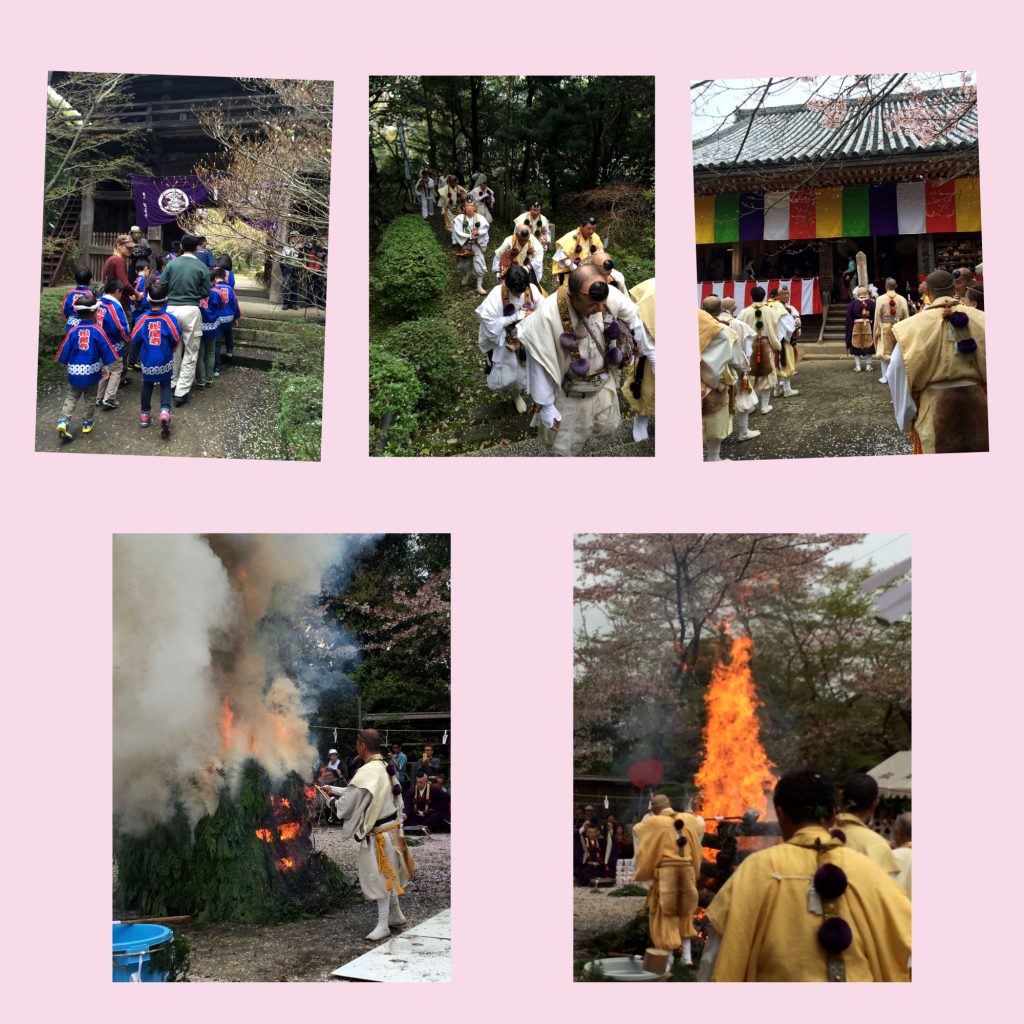
On the first Sunday of April, when the cherry blossoms are in full bloom, the “Sakura Festival” -Matsuoji Spring Daihoe-is held at Matsuoji in Matsuoji-cho, Izumi City. There are also events that are hard to see now, such as the lantern Daigoma offering and the firewalking Iwao Shu. It is said that En no Gyōja opened in 672, and during the peak period from the Nanbokucho period to the Muromachi period, it was a large temple with 7,000 kokus (1koku=180ℓ) rice of temple territory, more than 300 temples and thousands of monks. During Oda Nobunaga burned down Tendai sect temples, Matsuo-ji Temple was also burned down. It was later rebuilt by Toyotomi Hideyori, but it also reached the abandoned temple during the abolition of Buddha in the Meiji era, and now only a few remains are retained. In my opinion, there seems to be some connection between Matsuo-ji Temple, which has 15 temples nationwide, and Matsuo Taisha Shrine, which enshrines the Hata clan, a skill group that came to Japan around the 5th century.
毎年桜がちょうど見頃になる4月の第一日曜日に、和泉市松尾寺町の松尾寺にて「桜まつり」~松尾寺春季大法会~が開催されます。採灯大護摩供、火渡り巖修 など、今ではなかなか目にすることができない行事も行われます。松尾寺は672年に役小角が開いたそうで、南北朝時代から室町時代の最盛期には、寺領7,000石、寺坊300余名、僧兵は数千人を数えたという大寺院でした。織田信長の天台宗寺院焼き討ちの煽りで寺院は悉く焼き尽くされました。のちに豊臣秀頼により再建されますが、これも明治の廃仏毀釈の中で廃寺に至り、今では僅かの遺構を留めるのみです。私見ですが、全国に15ヵ寺ある松尾寺と、 五世紀頃に渡来した技能集団である秦一族を祀る松尾大社には何らかの関連がありそうです。
